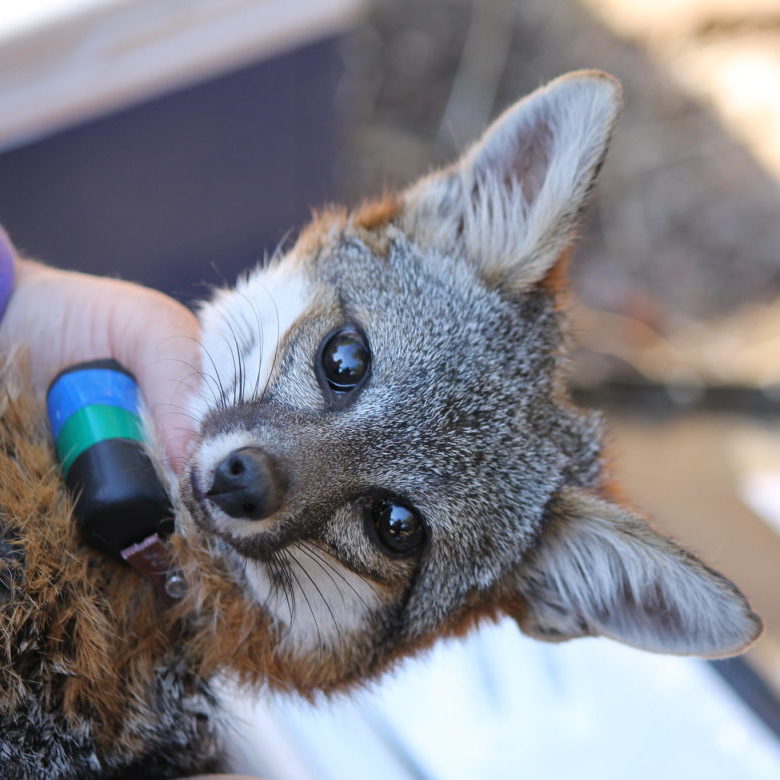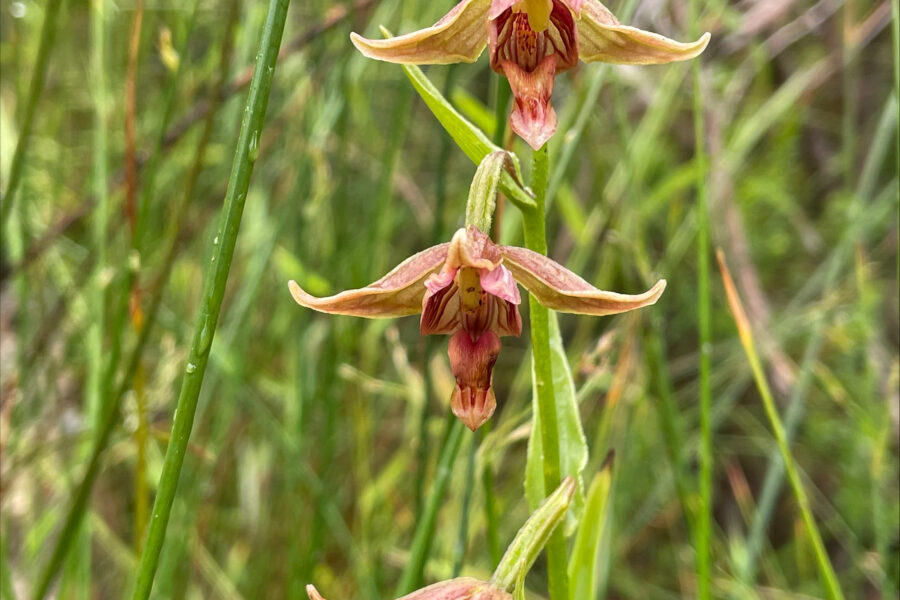Island Scientists Talk Foxes
ConservationThe annual Island Fox Conservation Working Group meeting brings together Channel Islands biologists and partners to discuss the incredible island fox subspecies.

Recently, Catalina Island Conservancy participated in the annual Island Fox Conservation Working Group meeting. The group, celebrating its 25th anniversary, brings together Channel Islands biologists and partners to discuss the incredible island fox subspecies. In the late 1990s, island fox populations began falling on several of the Channel Islands for different reasons. While golden eagles presented a threat on San Miguel, Santa Rosa, and Santa Cruz Islands, canine distemper virus decimated the population on Catalina Island.
“Though each island is a bit different in the habitat provided and the specific threats that make the fox populations vulnerable, they’re an archipelago that shares a similar climate and ecosystem,” said Catalina Island Conservancy Wildlife Conservation Manager Makenzie Henk. “We are able to learn a lot from each other.”
Catalina has the most visitors by far of any of the Channel Islands, which means that buffering against biosecurity issues is exceptionally important for the Catalina Island fox endemic subspecies. Guests on Catalina can help protect the foxes by ensuring pets are kept on leash and that there are no stowaway critters in boats or on gear.
Biologists from each island give an update on that location’s subspecies including the population estimate, mortality events, monitoring practices, outreach strategy, and more.
“There is island-wide fox trapping on each of the participating islands, so we are able to compare trends and see if the population on some islands are diverging from others,” added Henk. “We also learn from other island’s innovations.”
For instance, a new digital telemetry repeater system is being used on San Clemente Island, spearheaded by Institute for Wildlife Studies. Based on the success of that monitoring method, it may be a good option for additional islands to consider in the future.
The Island Fox Working Group also provides an opportunity for thought-leaders to discuss the most recent research about island foxes.
When it comes to the Catalina Island fox population, Henk assured that they are doing great. Based on an Island-wide, six-week, 217-trap undertaking October through December, it is estimated that there are currently just over 1,900 endemic Catalina Island foxes.
“This number is in line with previous years based on rainfall, and a bit higher than last year,” added Henk. “I wouldn’t be surprised if the fox numbers over the last few years reflect the current carrying capacity for Catalina.”
During fox trapping, biologists deploy radio collars on sentinel foxes to constantly monitor the population via vehicle and aerial telemetry. The Conservancy also administers vaccines against rabies and Canine Distemper Virus (CDV), provide protection against ear mites, fleas and ticks. Blood samples are collected and then sent for testing to determine exposure to five specific diseases including Canine Adenovirus, Canine Coronavirus, Canine Herpesvirus, Canine Parvovirus, and Canine Distemper Virus. A low level of CDV exposure highlighted the importance of continued vaccination.
Friends of the Island Fox provided a generous donation to fund vaccines, radio collars, and serology services. The Conservancy appreciates their support and participation in the Island Fox Working Group.


